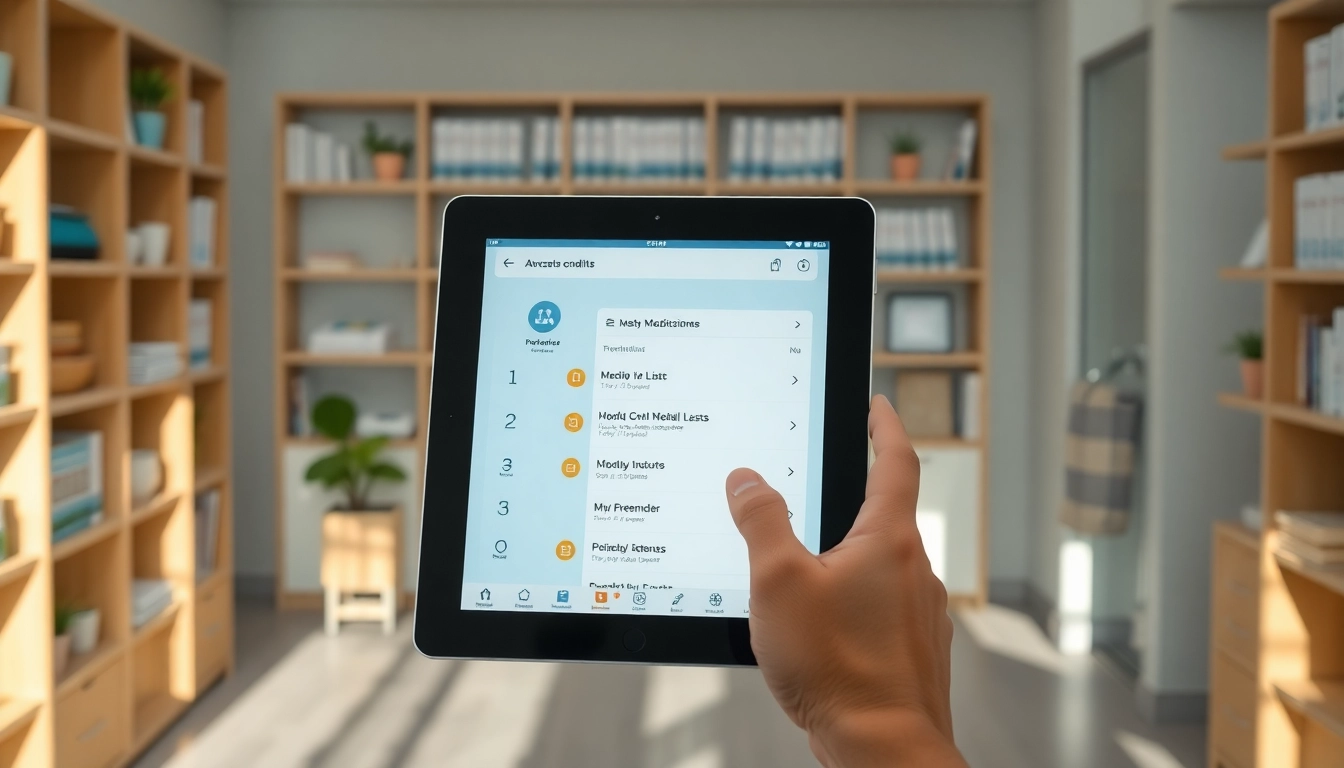The Importance of E-Prescribing in Modern Healthcare
E-prescribing, or electronic prescribing, has emerged as a pivotal element in the modernization of healthcare delivery. By allowing healthcare providers to send prescriptions directly to pharmacies via electronic means, e-prescribing streamlines the prescribing process, enhances medication safety, and improves patient care outcomes. As healthcare increasingly leans towards digital solutions, understanding the benefits and implementation of best eprescription apps becomes essential for practitioners aiming for efficiency and accuracy in their practices.
Understanding E-Prescribing
E-prescribing is not merely an electronic version of traditional paper prescriptions; it involves a robust software solution that facilitates the entire prescription process. This comprehensive system allows for the verification of patient information, checks for drug interactions, and even manages refill requests. By reducing the potential for human error, e-prescribing enhances patient safety and contributes to a more robust healthcare system.
Benefits of E-Prescribing for Healthcare Providers
Healthcare providers stand to gain significantly from adopting e-prescribing solutions. The benefits include:
- Increased Efficiency: E-prescribing eliminates the need for handwritten prescriptions, reducing the time spent on administrative tasks.
- Enhanced Accuracy: Automated checks for drug interactions and allergies help minimize errors that can occur with manual input.
- Improved Patient Safety: E-prescribing allows for easy access to a patient’s medication history, reducing the risk of adverse drug interactions.
- Cost Savings: Reducing paper usage and administrative burden leads to cost efficiencies for healthcare practices.
Challenges and Solutions in Implementing E-Prescribing
While the advantages of e-prescribing are compelling, the transition can present challenges, such as:
- Resistance to Change: Healthcare providers accustomed to traditional methods may resist adopting new technologies. Addressing this through comprehensive training and highlighting benefits can aid in easing the transition.
- Integration Issues: Ensuring compatibility between different systems can be difficult. Choosing software that interfaces well with existing Electronic Health Record (EHR) systems is crucial.
- Regulatory Compliance: E-prescribing regulations can be complex. Regular training and updates regarding these changes are necessary for compliance.
Key Features to Look for in the Best E-Prescription Apps
When evaluating e-prescription applications, specific features can significantly enhance the user experience and overall functionality.
User-Friendly Interfaces
A user-friendly interface is critical to ensure that healthcare practitioners can navigate the system effortlessly. An easily accessible dashboard with clear instructions can increase adoption among staff and reduce training time.
Security and Compliance Standards
Given the sensitive nature of patient data, it is essential that the e-prescribing software adheres to stringent security protocols and regulatory compliance standards. This includes features like encryption and secure access controls to protect patient information.
Integration Capabilities with Other Systems
Efficient integration with EHRs, billing software, and other healthcare applications is vital. The best e-prescription apps should be able to effortlessly exchange information across various platforms to ensure seamless workflows in patient care.
Comparison of the Best E-Prescription Apps
In evaluating the landscape of e-prescribing apps, it is essential to consider several aspects that can affect a provider’s choice.
Evaluation Criteria for E-Prescribing Software
When comparing e-prescribing solutions, the following criteria should be prioritized:
- Usability: Evaluate how intuitive the software is through user experience tests.
- Customer Support: Reliable customer service can alleviate issues that may arise during use.
- Cost Structure: Analysis of subscription models and hidden fees is fundamental to understanding the long-term financial impact.
Analyzing User Reviews and Feedback
User reviews are a rich source of insight into the actual performance of e-prescribing software. Gathering feedback from different users can help in identifying common issues and the software’s strengths, leading to a well-informed purchasing decision.
Price vs. Value Assessment
Finding the best balance between price and functionality is crucial. While a low-cost solution may be tempting, it is essential to evaluate the potential return on investment, considering factors such as improved efficiency and reduced error rates.
Case Studies: Successful Implementation of E-Prescribing
Real-world examples of successful e-prescribing implementations can provide valuable insights into best practices and measurable outcomes.
Practice Transformation Stories
Numerous healthcare providers have reported significant transformations in their practices following the adoption of e-prescribing. For instance, practices have noted decreased prescription errors and enhanced patient throughput, ultimately leading to improved patient satisfaction rates.
Measuring Impact on Patient Care
The impact of e-prescribing on patient care can be measured through several metrics, including medication adherence rates, reduction in adverse drug events, and overall patient satisfaction scores. These metrics serve as crucial indicators of the effectiveness of e-prescribing solutions.
Long-Term Benefits Realized by Clinics
Clinics that successfully integrate e-prescribing often reap long-term benefits such as increased efficiency, lower operational costs, and enhanced patient care. Over time, the data collected from these solutions may also inform better clinical decisions.
Future Trends in E-Prescribing Technology
As technology continues to evolve, e-prescribing is poised for several exciting developments that may further enhance its utility.
Emerging Technologies and Innovations
Future trends in e-prescribing may include advanced features such as predictive analytics that can forecast patient needs, artificial intelligence to facilitate decision-making, and integration with telehealth platforms to improve access to care.
Regulatory Changes and Their Implications
Regulations governing e-prescribing are likely to evolve, with an emphasis on improving patient safety and increasing access to care. Staying informed on regulatory changes will be crucial for practitioners to maintain compliance.
Preparing for the Next Wave of E-Prescribing Solutions
As the field grows, preparing for advancements and equipping healthcare teams with the training and tools necessary to adapt will ensure a smooth transition into the next phase of e-prescribing technology.




